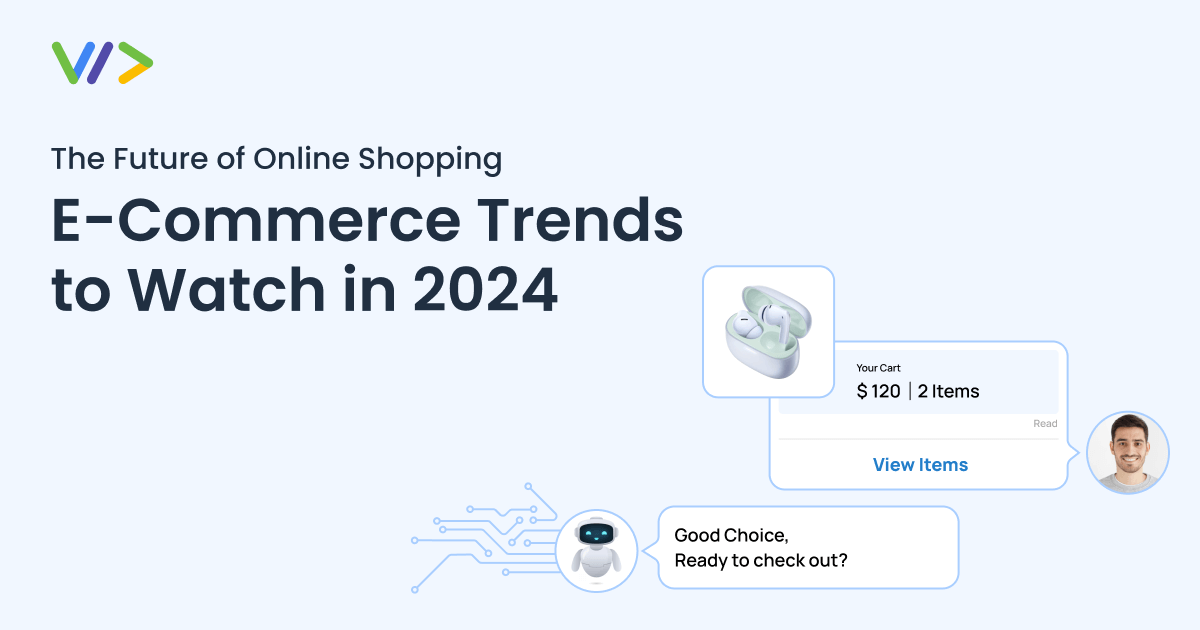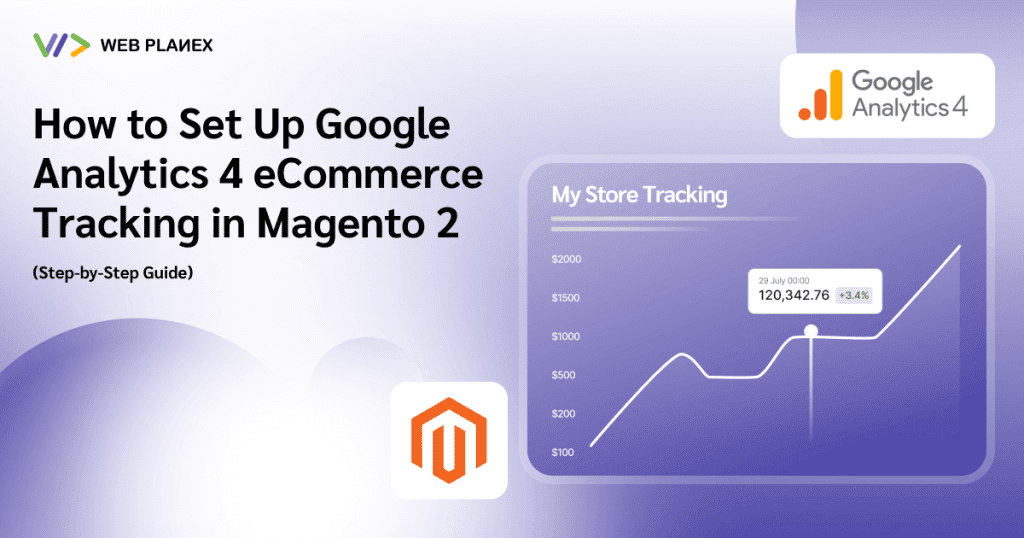
Trends generally keep changing, and that can be seen in the e-commerce world too. The way we shop online is a new era of online shopping. In 2024, e-commerce is all set to move forward with emerging trends.
In this blog, we are going to explore the e-commerce trends that every retailer and customer needs to know.
Key Trends in eCommerce for 2024
Conversational Commerce:
Conversational commerce provides customers with a human-like experience. Getting engaged with chatbots for inquiries about services, product details, and more through messaging apps and websites now offers a more human and personalized experience.
Participating in real-time conversations with businesses allows customers to naturally enhance their purchasing experience, adding an interactive and personalized touch. With a chatbot or live agent, customers can now do conversational marketing to buy products and learn more about products or services. This trend is getting more attention.
Headless Commerce:
The headless commerce trend is in the spotlight. This modular architecture allows e-commerce teams to give new experiences quickly, as they now don’t need to wait to make changes to back-end systems. Updating online interfaces with APIs, experienced managers, and intuitive tools has become easier.
With headless commerce, customers can experience a unique shopping experience across all devices and touch points.
Social Commerce:
There are popular social media platforms like Instagram, Facebook, Snapchat, and TikTok that claim to have billions of monthly active users. Moreover, this year, over two-thirds (67%) of global shoppers have done online shopping through social media.
Social commerce helps you connect to a vast global audience, which opens the door to introducing your brand to a new market and making a strong bond with customers.
Social commerce tools such as generative AI can effortlessly create content and integrate with social media platforms, making the shopping experience engaging.
Artificial Intelligence (AI):
There is no doubt that artificial intelligence has transformed the e-commerce world. AI technology helps automate and personalize product recommendations, chatbots, and various other tasks. Generative and predictive AI are trained on large language models (LLM) that pave the way for you to increase personalized experiences. AI can efficiently handle a huge product catalog and reduce the time required to write and categorize individual descriptions.
Most importantly, it enhances your SEO efforts by creating meta titles and meta descriptions automatically for each product. Generative page designers allow users to create a landing page in mere seconds by using conversational building tools.
Subscription E-commerce:
The subscription e-commerce trend among customers is getting popular. This model allows customers to subscribe to receive products and services on a regular basis. They can also get access to specific information or take advantage of special offers. It is a win-win situation for both customers and owners.
Live-Streaming Commerce:
Live-streaming commerce is a rising trend in retail that combines live video streaming with online shopping. It enables businesses to have direct interactions with customers through live video streaming and sell their products easily. Even customers can learn more deeply about product features.
Loyalty Programs:
While attracting new customers is crucial, retaining existing ones is equally essential. This means that you need to focus on winning customers’ trust and improving your brand image. Customers are eagerly waiting for loyalty programs, but at the same time, they demand rewards that are meaningful and offer a better experience. Successful loyalty programs depend on the level of personalization.
Loyalty programs are a great marketing tactic to keep customers engaged with your brand and fully satisfied. This trend is gaining immense popularity as customers get special discounts.
Personalized Shopping Experience:
Customers are often in search of a personalized shopping experience when shopping online. Nowadays, e-commerce businesses are using advanced customer analytics tools to gather customers’ data regarding their preferences and requirements. This data helps brands provide them with personalized shopping experiences.
Through digital mannequins, customers can easily choose the perfect fit and style. These virtual models are equipped with sensors that track customers’ body dimensions and preferences.
Rise in Second-Hand Items Purchases:
Over the past few years, there has been a notable shift in consumer perceptions of resale items. The trend of purchasing second-hand items has increased significantly. According to reliable sources, roughly 56% of customers purchased second-hand items last year. In sum, the resale trend is beneficial for both shoppers and businesses.
AI-Generated Images:
AI-generated imagery proves highly effective when it comes to personalizing product images to cater to diverse audiences. It increases conversion rates and integration of Generative AI makes this process more affordable and quicker.
E-commerce businesses are investing in AI image generation technology to create personalized ads that attract a large customer base.
Voice Commerce:
Voice commerce is also classified as v-commerce that uses voice-activated assistants and devices to allow customers to make purchases through voice commands. There are some popular voice assistants available such as Amazon Alexa, Google Assistant, and Apple Siri that are capable of responding to voice instructions, and customers’ queries, and even help in completing the purchase process.
Conclusion
The future of online shopping looks promising and more convenient for both customers and businesses as per these e-commerce trends. As we are in 2024, it is now clear these trends will make the e-commerce industry shine. These trends allow businesses to reach out to more customers, accelerate daily tasks, and drive progress. With these emerging trends, e-commerce leaders can uplift their businesses and provide customers with exceptional shopping experiences.




